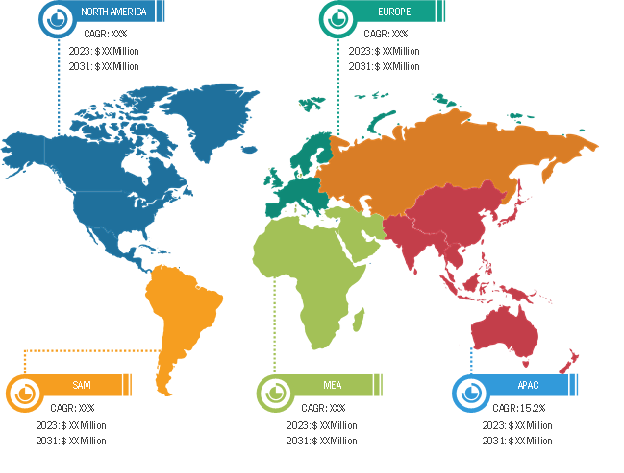Increasing Adoption of EDI Transactions and Standards to Drive Electronic Data Interchange Market Growth During Forecast Period
According to our latest market study on "Electronic Data Interchange Market Size and Forecast (2021–2031), Global and Regional Share, Trends, and Growth Opportunity Analysis – by Component, Type, and Industry," the market is expected to grow from US$ 34.02 billion in 2024 to US$ 74.36 billion by 2031; it is estimated to register a CAGR of 11.9% from 2025 to 2031. The report includes growth prospects in light of current electronic data interchange market trends and driving the growth.
An electronic data interchange (EDI) document comprises minimum vital data to ensure smooth EDI transactions. The organizations are required to adhere to stringent EDI formatting rules as this helps retrieve the document's relevant information. In 1979, the American National Standards Institute (ANSI) established the Accredited Standards Committee (ASC) X12 to create standardized protocols for the electronic exchange of business transactions, specifically EDI. Initially designed to support companies across various industries in North America, ANSI X12 has since expanded its reach, with over 300,000 companies utilizing X12 EDI standards for daily business transactions worldwide. In addition, ASC X12 plays a key role in the development of UN/EDIFACT messages, which are widely used outside of the US.
Electronic Data Interchange Market Analysis — by Geography
Electronic Data Interchange Market Size and Forecast (2021 - 2031), Global and Regional Share, Trend, and Growth Opportunity Analysis Report Coverage: By Component (Solution and Services), Type (Direct EDI, EDI via AS2, EDI via VAN, Mobile EDI, Web EDI, EDI Outsourcing, and Others), and Industry (BFSI, Retail & Consumer Goods, Healthcare, IT & Telecommunication, Transportation & Logistics, and Others), and Geography
Electronic Data Interchange Market Size, Growth, Share by 2031
Download Free Sample
Source: The Insight Partners Analysis
Governments of various countries across the globe have begun authorizing the adoption of EDI solutions for receiving and sending data from organizations to trading partners. For instance, the Electronic Data Interchange For Administration, Commerce, and Transport (EDIFACT) is an international EDI standard developed by the United Nations (UN). It is widely used by countries in Europe, Asia Pacific, and other regions worldwide. These standards effectively allow numerous transactions such as purchase orders, invoices, and dispatch advice to support manufacturing, logistics, and retail industries in multi-country trade and regulatory requirements. The Colorado Department of Human Services (CDHS) is dedicated to integrating equity, diversity, and inclusion across the organization. The CDHS Equity, Diversity, and Inclusion Action Plan 2021–25 embodies this commitment, and it aims to be transparent about all the EDI efforts and the progress that are made on the plan. EDI solution providers offer various solutions with benefits such as compliance features to abide by the complex country regulations and guard against any risk associated with the regulatory compliances that affect "procure to pay" and "order to cash" business processes.
EDI is widely used and increasingly adopted by various sectors to optimize their supply chain operations. For instance, according to Generix Group data of March 2024, around 86% of businesses are using EDI to fulfill trading partner requirements and facilitate compliance with industry standards. EDI solutions provide significant business benefits, such as faster transaction processing, improved cash flows, and enhanced accuracy and supply chain visibility by reducing administrative costs. Such benefits propel the demand for EDI solutions to automate workflow processes. Thus, the increasing adoption of EDI transactions and standards fuels the global electronic data interchange market growth.
The scope of the electronic data interchange market report focuses on North America (US, Canada, and Mexico), Europe (UK, Germany, France, Italy, Russia, and Rest of Europe), Asia Pacific (South Korea, China, India, Japan, Australia, and Rest of Asia Pacific), Middle East & Africa (South Africa, Saudi Arabia, UAE, and Rest of Middle East & Africa), and South & Central America (Brazil, Argentina, and Rest of South & Central America). In North America, the US held the largest electronic data interchange market share in 2024. Similarly, in Europe, Germany held the largest electronic data interchange market share in 2024.
Salesforce, Inc. (MuleSoft); SPS Commerce, Inc.; TrueCommerce Inc.; IBM Corporation; Cleo; Generix Group; Comarch SA; THE DESCARTES SYSTEMS GROUP INC; EDICOM; Unifiedpost Group; Epicor Software Corp; eZCom Software Inc.; Amazon Web Services (AWS); OpenText; and Lobster Data GmbH are among the key players profiled in the electronic data interchange market report. Several other major market players were also studied and analyzed during this market research study to get a holistic view of the market and its ecosystem. The electronic data interchange market report provides detailed market insights, which help the key players strategize their growth. The electronic data interchange market forecast can help stakeholders plan their growth strategies.
The Canada Revenue Agency (CRA) established a series of circulars on electronic transactions such as electronic invoicing (circular IC05-1R1), which will accelerate their use throughout the country. The use of EDI solutions will rise in Canada in the coming years due to a large number of invoices prevailing within the country. Moreover, the Peppol network, which is used as an electronic ordering & e-invoice exchange platform, is widely used for B2B transactions in 32 countries, including the US, Canada, and Singapore.
Various EDI suppliers in Canada are expanding their presence through mergers and acquisitions. In January 2023, Crisp Inc acquired Integral Group Inc, a Canadian EDI supplier, to expand supply chain visibility with EDI data and retail integrations. Crisp and Integral will facilitate supplier and retailer collaboration and provide seamless, end-to-end data integration inside the consumer-packaged goods enterprise. Mergers and acquisitions strategies by market players drive the adoption of electronic data interchange solutions in Canada.
Contact Us
Phone: +1-646-491-9876
Email Id: sales@theinsightpartners.com